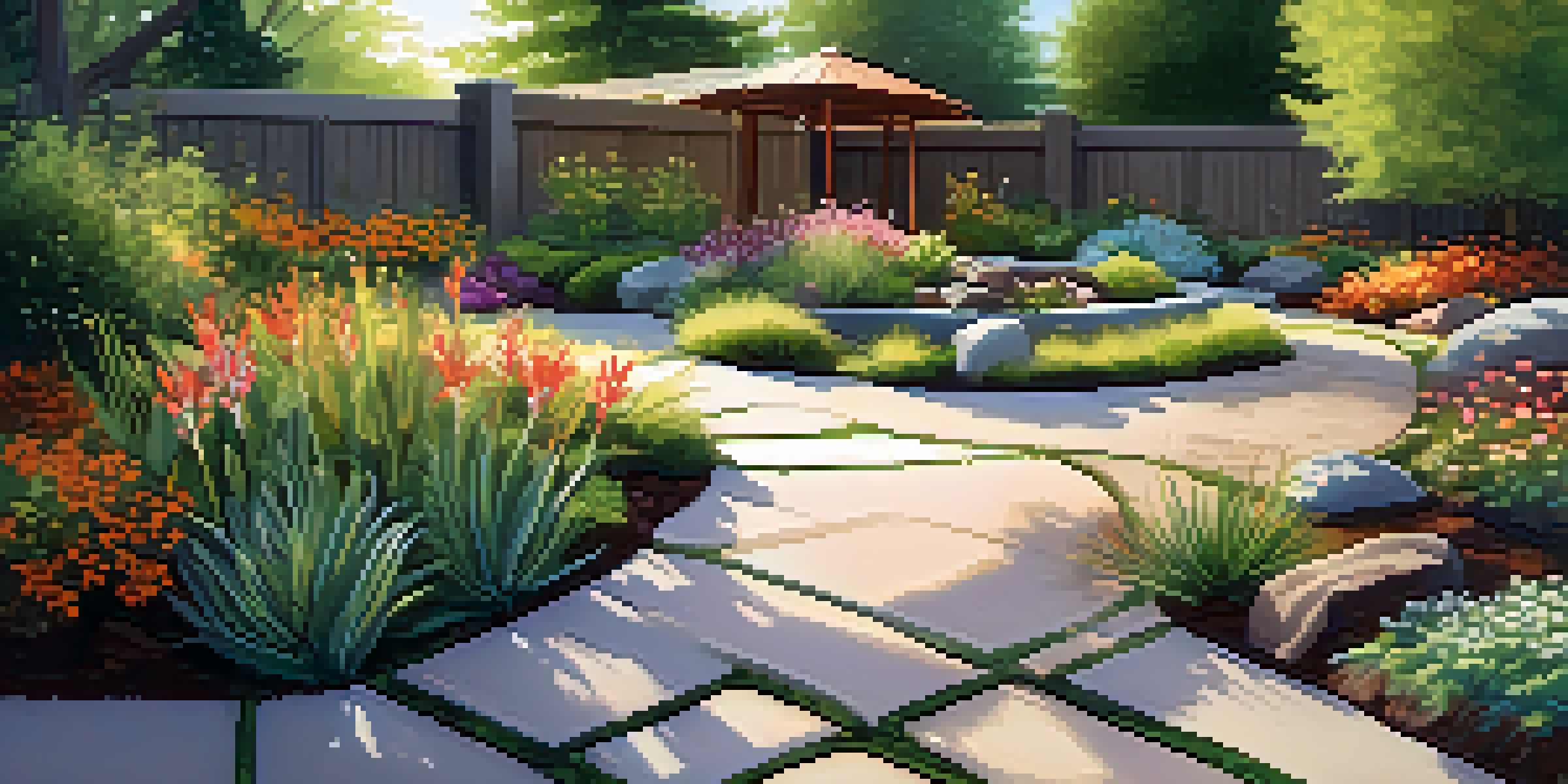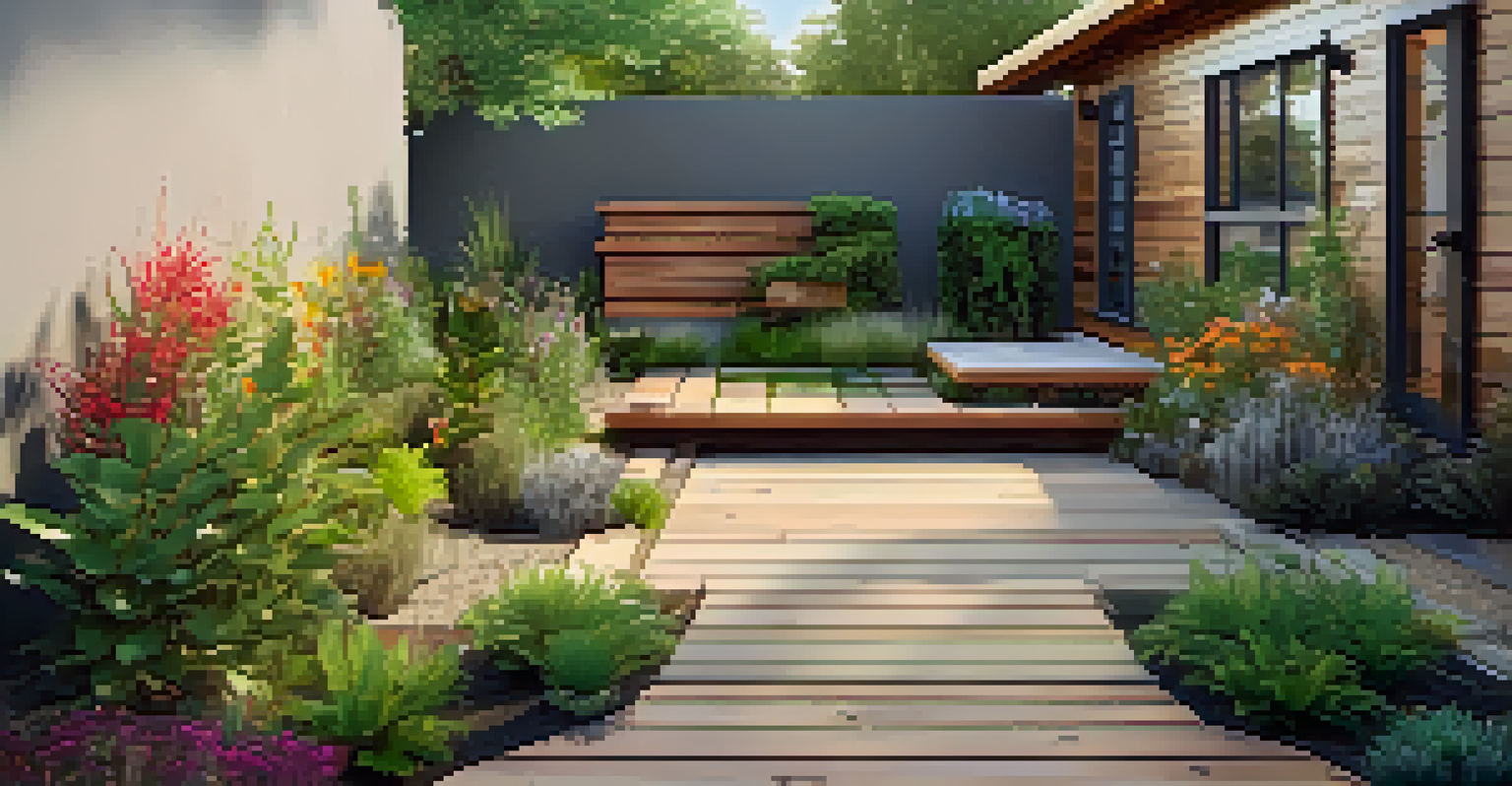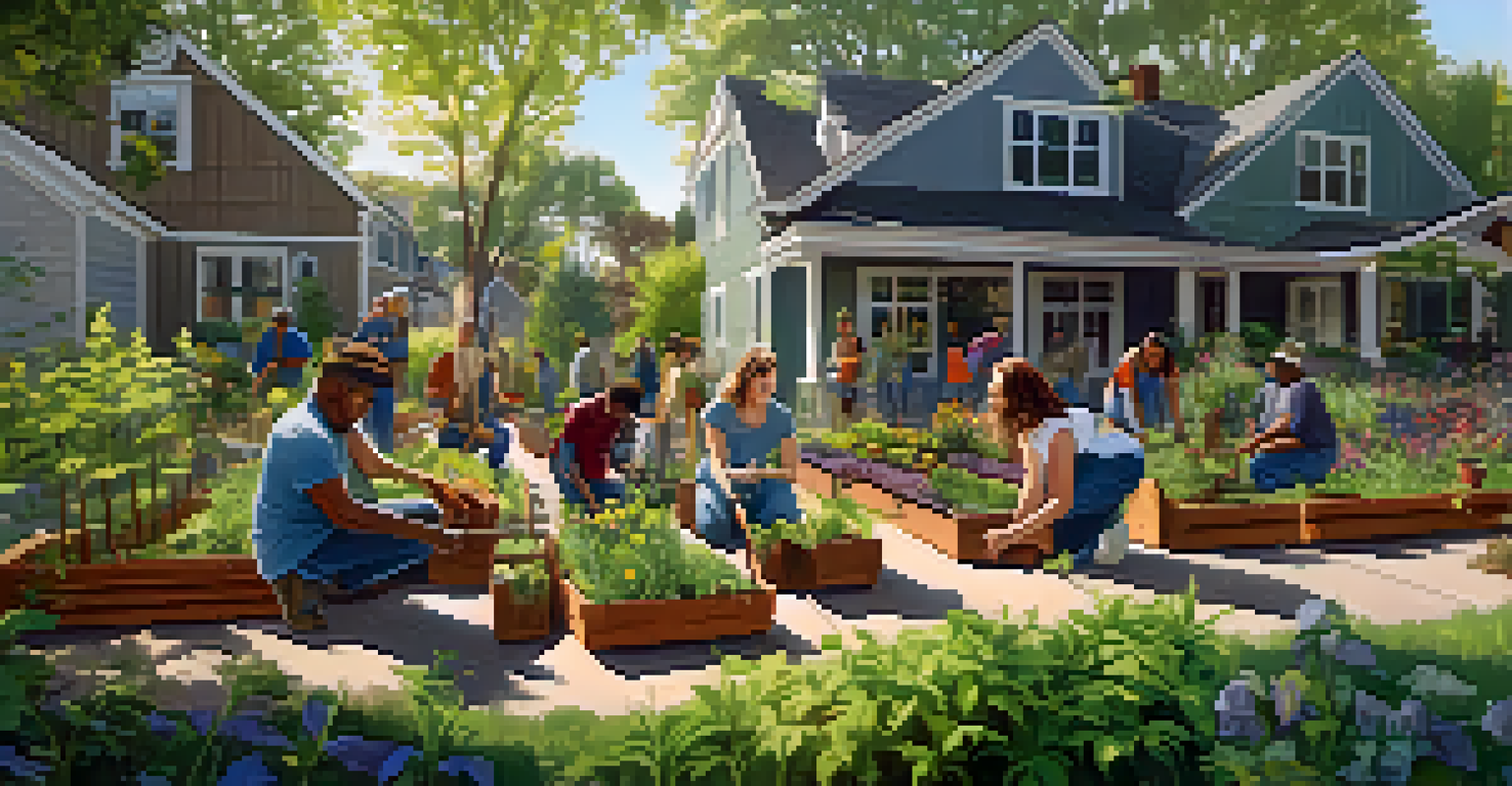Creative Ways to Incorporate Sustainable Practices in Landscaping

Understanding Sustainable Landscaping Practices
Sustainable landscaping is all about creating a beautiful outdoor space while being mindful of the environment. It involves using eco-friendly materials, conserving water, and promoting biodiversity. By adopting these practices, you not only enhance the aesthetic appeal of your landscape but also contribute to ecological health.
The best time to plant a tree was twenty years ago. The second best time is now.
Imagine a landscape that thrives on native plants, which require less water and maintenance than exotic species. This approach not only saves time and money but also supports local wildlife. When you think sustainable landscaping, think of a harmonious relationship between nature and design.
Ultimately, sustainable landscaping isn’t just a trend; it’s a necessary shift towards environmental responsibility. By understanding its principles, you can start making informed choices that benefit both your garden and the planet.
Using Native Plants for Low-Maintenance Gardens
One of the simplest ways to create a sustainable landscape is by incorporating native plants. These plants are adapted to your local climate, soil, and ecosystem, which means they typically require less water and fertilizer. Plus, they provide essential habitats for local wildlife, like bees and butterflies.

For instance, if you live in a dry region, consider planting succulents or drought-resistant species. Not only will this reduce your water usage, but it also creates a stunning visual contrast with traditional gardens. Native plants often have unique colors and textures that can add a special touch to your landscape.
Embrace Native Plants for Beauty
Using native plants not only enhances your garden's aesthetic but also supports local wildlife and requires less maintenance.
By focusing on native species, you’re not just creating a beautiful garden; you’re also inviting nature back into your yard. This creates a win-win situation where both you and the local ecosystem benefit.
Implementing Rain Gardens for Water Management
Rain gardens are a fantastic solution for managing stormwater runoff while adding beauty to your landscape. These gardens are designed to capture and absorb rainwater, allowing it to filter into the ground naturally. This helps prevent flooding and reduces pollutants from entering local waterways.
Nature does not hurry, yet everything is accomplished.
Creating a rain garden involves selecting the right plants that can thrive in both wet and dry conditions. For example, you might include species like ferns or ornamental grasses that can withstand varying levels of moisture. This not only beautifies your space but also plays a crucial role in water conservation.
Incorporating a rain garden into your landscaping not only showcases your commitment to sustainability but also promotes a healthier environment. It’s a creative way to utilize natural resources while enjoying the aesthetic benefits.
Composting for Nutrient-Rich Soil
Composting is an excellent way to enrich your garden soil while reducing waste. By turning kitchen scraps and yard waste into nutrient-rich compost, you can improve soil structure and fertility. This practice not only minimizes trash sent to landfills but also creates a sustainable cycle of growth in your garden.
For example, adding compost to your flower beds or vegetable patches encourages healthy plant growth. It enhances moisture retention, reduces the need for chemical fertilizers, and supports beneficial microorganisms in the soil. This way, you nurture your plants naturally.
Utilize Rain Gardens for Sustainability
Implementing rain gardens helps manage stormwater runoff, promotes water conservation, and adds beauty to your landscape.
Embracing composting as part of your landscaping routine can significantly impact both your garden's health and the environment. It’s an easy, impactful step towards a more sustainable lifestyle.
Creating a Wildlife Habitat in Your Yard
Transforming your landscaping into a wildlife-friendly habitat can be a rewarding endeavor. This involves planting diverse flora, installing birdhouses, and providing water sources to attract various species. By doing this, your garden becomes a sanctuary for birds, pollinators, and other wildlife.
For instance, adding a small pond or birdbath can create a refreshing oasis for local critters, while butterfly-friendly plants can draw in these beautiful insects. By offering shelter and food sources, you can help support local ecosystems right in your backyard.
Incorporating wildlife habitats into your landscaping not only enhances biodiversity but also provides you with a front-row seat to nature’s wonders. It’s a beautiful way to connect with the environment while promoting sustainability.
Using Eco-Friendly Materials for Hardscaping
When it comes to hardscaping, choosing eco-friendly materials can make a significant difference. Opting for permeable paving stones or reclaimed wood helps reduce your carbon footprint and supports sustainable practices. These materials not only look great but also contribute to a healthier environment.
For example, permeable pavers allow rainwater to seep through, reducing runoff and promoting natural filtration. This can prevent water pooling and erosion in your garden. Meanwhile, using reclaimed materials adds character and a story to your outdoor space.
Engage Community for Greater Impact
Involving the community in sustainable landscaping initiatives fosters environmental stewardship and enhances shared green spaces.
By incorporating eco-friendly materials into your hardscaping, you're making a conscious choice for sustainability. It’s a practical and stylish way to enhance your landscape while being kind to the planet.
Implementing Smart Irrigation Systems
Effective water management is crucial for maintaining a sustainable landscape, and smart irrigation systems are a game-changer. These systems use technology to monitor soil moisture and weather conditions, ensuring that your plants receive just the right amount of water. This not only conserves water but also promotes healthier plant growth.
For instance, drip irrigation systems deliver water directly to the roots, minimizing evaporation and runoff. By controlling where the water goes, you can significantly reduce waste, especially in dry climates. It’s an efficient way to ensure your plants thrive without over-watering.

Investing in smart irrigation isn’t just about convenience; it’s a step towards sustainable landscaping that can save you time and resources. It’s a win for your garden and the environment.
Engaging the Community in Sustainable Landscaping
Community involvement can amplify the impact of sustainable landscaping practices. By organizing neighborhood workshops or tree-planting events, you can encourage others to adopt eco-friendly methods while beautifying shared spaces. This collective effort fosters a sense of community while promoting environmental stewardship.
Consider partnering with local organizations to host educational sessions on sustainable gardening techniques. Sharing knowledge and resources can empower more individuals to make sustainable choices, creating a ripple effect in your community. Plus, working together can turn a daunting task into a fun and rewarding experience.
By engaging the community, you not only enhance your local environment but also build lasting relationships with neighbors. It’s a powerful way to spread awareness and inspire sustainable practices beyond your own garden.